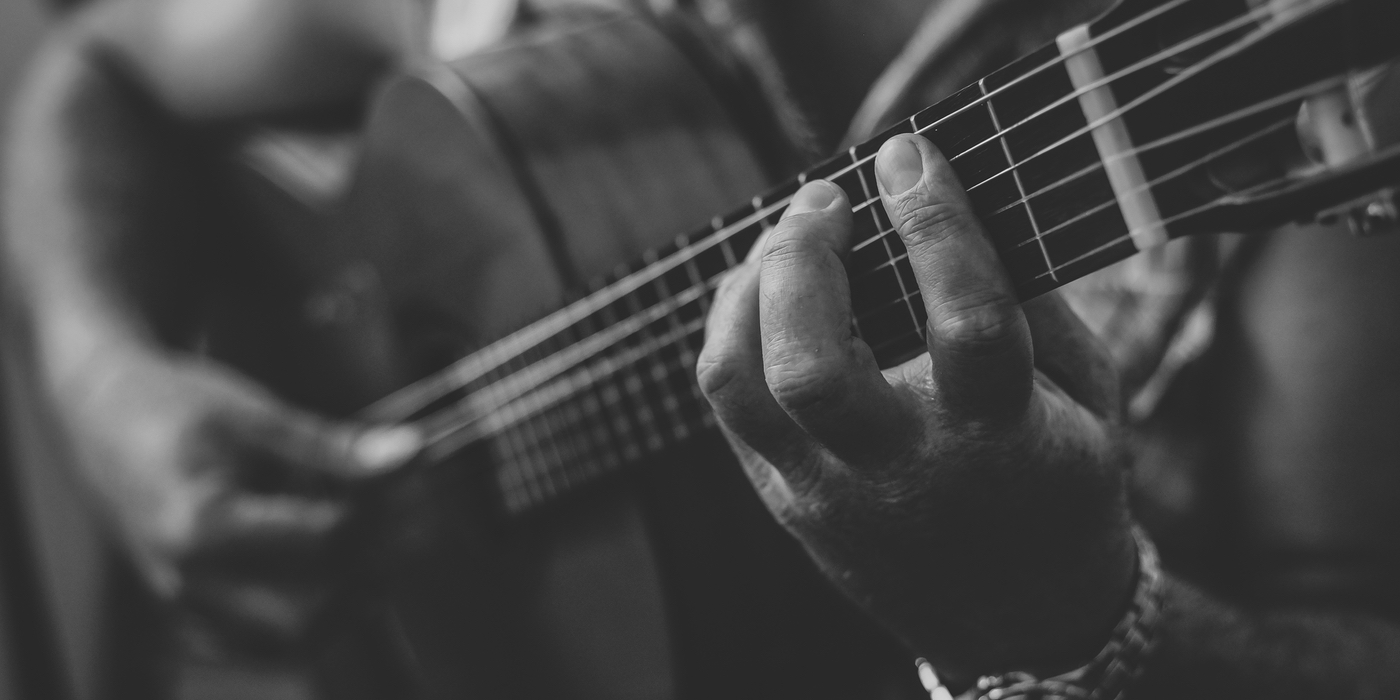Classical Guitar Basics

In our brief look at some classical guitar basics, we will look at its distinctive features, important figures, construction, and basics of classical guitar technique.
Distinctive Features
Part of what makes classical guitars distinctive from other guitars is the usage of nylon strings as opposed to steel or nickel. Though originally made of gut, nylon strings became popular during the 20th century. Because the tension of nylon strings is far lower than that of steel strings, classical guitars also lack truss rods (used for adjusting tension changes in steel string guitars). As a result of the lower string bracing, the interior bracing of a classical guitar is also lighter, resulting in a much more lightweight instrument.
Important Figures
Although we deal with important figures of
classical guitar in another section, it's worth mentioning a couple of
names briefly. The first is Antonio Torres Jurado, noted for
revolutionizing classical guitar construction (and even greatly
affecting all acoustic guitar construction) with his still-popular "fan
bracing" technique. His guitars were also known for their well-balanced
and clear tone.
Of course, the name most commonly associated with the classical guitar is Andrés Segovia, considered by most to be the father of contemporary classical guitar. Largely self-taught, Segovia helped standardize much of accepted classical guitar repertoire and contributed his own transcriptions. Although many were critical of what they considered to be his authoritarian approach to teaching, he nevertheless considering teaching an important aspect of his career. Other guitarists worth checking out are Christopher Parkening, John Williams, Eliot Fisk, Julian Bream, and Benjamin Verdery, most of whom studied with Segovia at some point.
Construction Basics
While
classical guitar has much in common with its acoustic guitar brethren,
there are numerous characteristics that make classical guitar
construction unique. In addition to the lack of a truss rod noted above,
classical guitars also features wider necks, typically 48–54 mm at the
nut as opposed to 42 mm for electric guitars. The wider neck facilitates
chordal playing. Also, classical guitar fingerboards are flat and lack
any sort of inlay markings, though some may have side markers. Interestingly, classical guitar tuning heads face inward rather than outward, like other acoustic and electric guitars. These are just a few interesting classical guitar basics of construction.
Playing Basics
Unlike more popular forms of the guitar, a classical guitar is played solely with the fingers and nails instead of a pick/plectrum. For this reason, classical guitarists either need to grow their nails long enough or apply fake nails in order to achieve the varieties of tone with classical guitar. Classical guitarists also elevate the guitar either with a small footstool or with a device attached to the guitar itself.
Classical Guitar Basics - Final Words
Like any style of guitar, classical guitar demands that you understand the basics before you move on to more advanced areas of study. If there's anything you'd like to add to the above conversation, let me know. I'd love to hear from you!
Add Your Comments Here!
I'd love for you to be a contributor to SoMuchGuitar.com!
Just fill out the information below to add to this page. I'll be in touch about your submission soon!